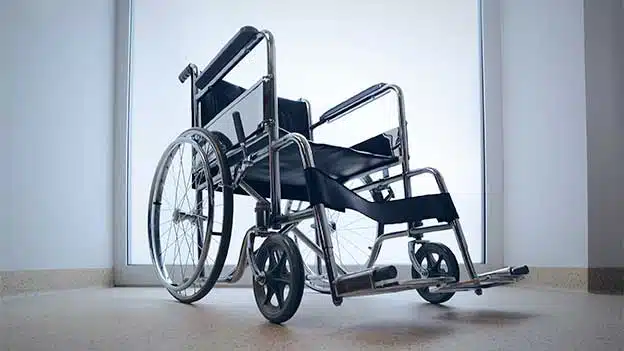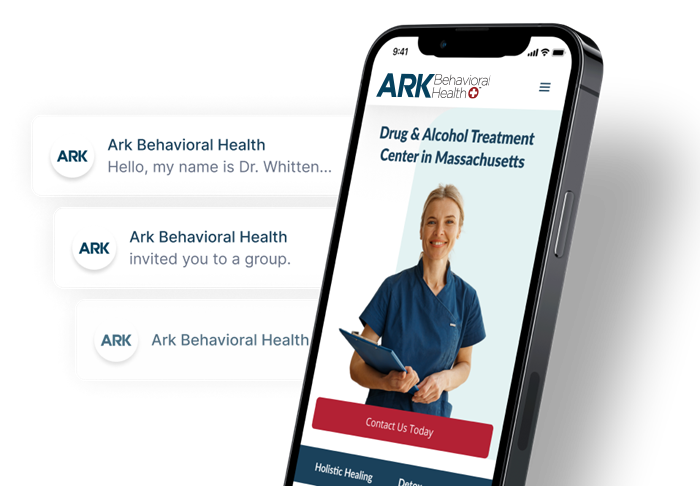Substance Abuse In People With Physical And Mental Disabilities
- Substance Abuse And Physical Disability
- Developmental Disabilities
- Commonly Abused Drugs
- Risk Factors And Treatment Disparities
- Best Treatment Practices
- Helpful Resources
- Finding Addiction Treatment

Substance use disorders rarely exist in a vacuum. Often, people with addictions have other conditions and disabilities.
In 2016, the Substance Abuse and Mental Health Services Administration (SAMHSA) reported that 61.4 million non-institutionalized adults in the United States had at least one disability.
While people with physical and cognitive disabilities are more likely to experience substance abuse, they are also less likely to receive treatment than members of the general population.
Various factors connect disability and substance abuse.
In this guide, you’ll find an overview of different disabilities, which drugs are often abused in disabled communities, and factors that impact disabled people in addiction treatment.
Substance Abuse And Physical Disability
A physical disability is any condition that impairs day-to-day physical functions.
There are many types of physical disabilities. Each one may overlap with substance abuse in different ways.
Addiction And Sensory Disabilities
Broadly speaking, a sensory disability is any disability that impacts the senses. However, when people refer to “sensory disabilities,” they are often referring to either vision or hearing impairments.
Research on blindness and addiction suggests that blind and visually impaired people are more likely than the general population to experience drug and alcohol abuse.
Meanwhile, research on deafness suggests that Deaf people are not more likely than the general population to use substances.
Even so, Deaf people who do use substances tend to use them more heavily than average.
Addiction And Muscular/Orthopedic Disabilities
There are several disabilities that impact the muscles and/or skeletal structure. Muscular and orthopedic disabilities impair functions such as balance, movement, and posture.
Some examples of bone and muscle disabilities include:
- spina bifida
- cerebral palsy
- dwarfism
- osteogenesis imperfecta (brittle bone disease)
- muscular dystrophy
- spinal cord injury
- rheumatoid arthritis
These disabilities create a wide range of accessibility needs.
For example, one person with cerebral palsy may use a wheelchair while another may be more impacted in the arms than the legs.
Bone and muscle disabilities may co-occur with addiction for various reasons, including pain and spasticity, lack of adequate healthcare, and job-related difficulties.
However, more research is needed to determine the rates of drug abuse among these populations.
Addiction And Chronic Pain Conditions
Chronic pain is a condition that causes persistent pain for longer than three months.
It is an umbrella term that covers several disorders, including migraines, arthritis, fibromyalgia, and many others. In some cases, the cause of chronic pain is unknown.
No matter the cause, chronic pain is one of the most common reasons why people seek medical care in the United States.
Chronic Pain And Opioid Dependence
For some people with chronic pain, addiction may occur as a result of tolerance and dependence.
For example, opioid drugs, which are sometimes prescribed for pain, create high tolerance levels over time. Eventually, people begin to need higher doses to achieve the same pain relief.
While tolerance and dependence are not the same condition, tolerance can lead to addiction in some people.
Chronic Pain And Self-Medication
On the other hand, a lack of adequate treatment may also lead to addiction. Anecdotally, people with chronic pain have described difficulty receiving medical care for their condition.
The stigma surrounding chronic pain often means that doctors disbelieve patients, assuming that they are seeking drugs to abuse rather than medication to relieve pain.
These doctors may hesitate or even refuse to prescribe certain pain medications. When this happens, some people with chronic pain may seek relief from illicit drugs instead.
Substance Abuse And Developmental Disabilities
Developmental disabilities are conditions that begin during the developmental period of a person’s growth.
They impact a person’s ability to attain typical developmental milestones, such as walking, talking, or learning.
Some developmental conditions have a direct correlation with addiction, while others create protective factors against substance abuse.
In any case, when developmentally disabled people develop addictions, they face disadvantages that may prevent them from receiving appropriate care.
Addiction And ADHD
Attention-deficit/hyperactivity disorder (ADHD) causes a range of symptoms.
Symptoms of ADHD include:
- difficulty starting tasks
- difficulty sustaining focus
- distractibility
- hyperactivity or restless
- disorganization
- racing thoughts
- poor working memory
- impulsivity
- emotional dysregulation
ADHD Traits And Substance Use
People with ADHD are particularly vulnerable to addiction, but the exact connection between these two disorders is unclear.
Specific ADHD traits such as impulsivity and reward-seeking behavior may play a role in addiction development.
ADHD And Self-Medication
Much like chronic pain, ADHD may also lead to addiction when it remains untreated.
Experts generally believe that ADHD is caused by a lack of available dopamine, a brain chemical that prompts focus and motivation.
Stimulants such as Adderall increase the brain’s dopamine, thus providing relief for ADHD symptoms.
While stimulants are objectively addictive medications, they may protect people with ADHD from developing addictions, as they provide relief from the symptoms that cause addictive behaviors.
If, however, a person with ADHD cannot access treatment, they may self-medicate by seeking other dopamine-boosting substances, including alcohol and illicit drugs.
Addiction And Autism
Autism spectrum disorder (ASD) is a condition that impacts how people view and interact with the world.
Autistic people may struggle to recognize social cues, deal with sensory sensitivities, and have deep, specific interests.
Research provides mixed results about the connection between autism and addiction.
Some autistic traits may prevent addiction. For example, sensory sensitivities may make an autistic person dislike the way that drugs and alcohol make them feel.
However, other autistic traits and related stressors can increase vulnerability to addiction.
These traits and stressors include:
- social anxiety
- exhaustion from masking autistic traits
- a need for habits and routine
- a desire to dull sensory stimuli
Autism also has a strong correlation with ADHD. Many autistic people may deal with addiction due to overlapping ADHD traits.
Addiction And Intellectual Disability
Intellectual disabilities impair a person’s ability to learn.
They have many causes, including genetic conditions, birth defects, and injuries. For some, the cause of the disability is unknown.
Intellectually disabled people tend to have lower rates of substance use compared to the general population, according to substance abuse research.
However, research shows that intellectually disabled people who do use substances are more likely to misuse those substances than their non-disabled peers.
Addiction And Fetal Alcohol Spectrum Disorder (FASD)
Fetal alcohol spectrum disorder (FASD) can occur in infants when alcohol is consumed during pregnancy. The most severe form of FASD is called fetal alcohol syndrome (FAS).
FAS and FASD cause a range of cognitive and behavioral difficulties.
People with FASD may have impulsivity, poor decision-making skills, and an inability to recognize the consequences of their actions.
As a result, people with FASD deal with high rates of addiction.
Commonly Abused Drugs Among Disabled Populations
Among disabled populations, some drugs are more common than others.
Research shows that some of the most commonly abused drugs are alcohol, opioids, sedatives, and stimulants.
However, much of the available research on this topic is more than 10 years old. More current research is needed to determine if drug use has remained the same among these populations.
Alcohol
Alcohol is one of the most commonly used drugs among all demographics because it is readily available in many situations.
For people with poor impulse control, the easy availability of alcohol can contribute to an alcohol use disorder.
For those with social anxiety, alcohol is sometimes used to decrease inhibitions and make socializing seem easier.
Opioids
Opioids block pain signals by attaching to receptors in the brain.
At the same time, they promote feelings of calmness, and they can promote a false sense of safety in the process.
Opioids are abused for several reasons, including tolerance and dependence.
Heroin, an illicit opioid, is sometimes abused when people do not have access to legitimate pain medications. Many people develop a heroin addiction as a result.
Tranquilizers And Sedatives
Tranquilizers and sedatives are drugs that are prescribed for anxiety, panic, sleep disorders, and epilepsy.
They slow central nervous system (CNS) activity. Like opioids, they create feelings of relaxation, though they have different mechanisms of action.
Research on tranquilizers and sedatives reveals some risk factors for abuse and addiction.
A few of these risk factors include:
- a history of poverty and unemployment
- panic symptoms
- agoraphobia
- uninsurance
- a low education level
These factors can overlap with both physical and mental disabilities.
Stimulants
Stimulants are drugs that speed up signals in the CNS. They include legal prescription stimulants such as Adderall and illicit stimulants such as cocaine and methamphetamine.
Legal stimulants can be used responsibly to treat ADHD and narcolepsy. However, some people may turn to illegal stimulants if they do not have access to prescription medication.
For disabled people without ADHD or narcolepsy, stimulants may also become a source of self-medication.
Many disabilities, including chronic pain, cause extreme fatigue. Some people may use stimulants illicitly to counteract this fatigue.
Addiction Risk Factors And Treatment Disparities
Unfortunately, disabled people experience lower treatment rates when compared to their non-disabled peers despite an apparent need for specialized care.
For people with disabilities, several factors contribute to the risk of substance abuse. Some of these factors also contribute to addiction treatment disparities.
Poverty And Unemployment
In general, poverty and unemployment are risk factors for substance abuse. The stressors of unemployment often lead people to seek relief through drugs and alcohol.
Disabled people are twice as likely as non-disabled people to live in poverty.
According to the National Council on Disability, many disabled people use some form of financial safety net through the government.
However, these safety nets are flawed, and current policies surrounding these options often keep disabled people in poverty.
Furthermore, thousands of people with intellectual disabilities work for less than minimum wage.
Pain Management
When people have significant pain management needs, those needs can complicate substance abuse disorders.
Disabled adults who deal with both substance abuse and chronic pain have to navigate significant difficulties.
Accessibility And Isolation
Social isolation often contributes to addiction. This kind of isolation disproportionately impacts disabled individuals due to factors such as social stigma and inaccessibility.
A lack of accessibility can make the treatment process especially difficult as well. SAMHSA warns that many addiction treatment centers overestimate the accessibility of their programs.
Discrimination And Related Stress
Disabled people face higher rates of discrimination than non-disabled people, and this discrimination can cause negative health outcomes.
Discrimination and related stressors have been linked to poor mental health, which increases the risk of substance abuse.
Infantilization And Unmet Treatment Needs
Studies and resources on addiction often overlook disabled people and their needs. Many treatment providers may not understand that disabled people can experience substance abuse.
This lack of consideration may occur, in part, due to infantilization. Disabled people are often treated like children who cannot live their own lives or advocate for themselves.
When non-disabled people see disabled people as children, they may assume that disabled people never use drugs, drink alcohol, or exist in spaces for adults.
As a result, when disabled people do need addiction treatment, their needs are not always taken seriously.
Best Addiction Treatment Practices
SAMHSA recommends several practices for addiction treatment providers to better serve disabled participants.
Some of those practices include:
- providing staff training on accessibility
- reviewing accessibility and accommodation resources
- offering volunteer cognitive screenings during the intake process
- learning about the accessibility of local peer support groups
SAMHSA also notes that not every disability is obvious, and “invisible” disabilities can be mistaken for stubbornness or lack of effort.
Learning about disabilities can help staff members respond appropriately and offer the right accommodations.
Resources On Disability And Substance Abuse
If you or a loved one have an addiction, help is available. However, it can be difficult to know where to start.
Here you’ll find general resources for disabled people living with addiction:
- Drug Addiction and Federal Disability Rights Laws: a fact sheet explaining the rights and protections of people with addictions
- FindTreatment.gov: Search for addiction treatment, including treatment options that accept Medicaid.
More specific resources for disabled people living with addiction include:
- National Association of the Deaf – Mental Health Services: a resource explaining the rights of Deaf people in mental healthcare settings
- Alcoholics Anonymous Online Meeting Directory: Search for AA meetings online. Meetings are available for Deaf, blind, autistic, and otherwise disabled individuals.
- Overview of Health Insurance for People With Intellectual Disabilities: tools and information on health coverage for intellectually disabled people
- Color Communication Badges: a resource from the Autistic Self-Advocacy Network that allows people to indicate how they would like to communicate. These badges can be used in mental health and addiction care settings.
- CHADD Organization Directory: Search for resources for children and adults with ADHD.
- VisionAware: an organization providing resources, including emotional support, to blind and visually impaired people
Finding Addiction Treatment
Addiction recovery is difficult, especially when a person has a co-occurring condition. However, addiction recovery is possible.
Disabled people who deal with addiction deserve appropriate care. If you have a disability, you have every right to prioritize yourself and your mental health.
Written by Ark Behavioral Health Editorial Team
©2024 Ark National Holdings, LLC. | All Rights Reserved.
This page does not provide medical advice.
Centers for Disease Control and Prevention - Facts About Developmental Disabilities
Centre for Addiction and Mental Health - Fetal Alcohol Spectrum Disorder (FASD)
National Autistic Society - Addiction
National Institute on Drug Abuse - Co-Occurring Substance Use Disorder And Physical Comorbidities
National Library of Medicine - Attention Deficit Hyperactivity Disorder In Relation To Addictive Behaviors
National Library of Medicine - Illicit Drug Use By Persons With Disabilities: Insights From The National Household Survey On Drug Abuse
Substance Abuse and Mental Health Services Administration - Managing Chronic Pain In Adults With Or In Recovery From Substance Use Disorders
Substance Abuse and Mental Health Services Administration - Mental and Substance Use Disorder Treatment for People With Physical and Cognitive Disabilities
University of California Los Angeles - Discrimination Can Be Harmful To Your Mental Health

Questions About Treatment?
Ark Behavioral Health offers 100% confidential substance abuse assessment and treatment placement tailored to your individual needs. Achieve long-term recovery.
100% confidential. We respect your privacy.
Prefer Texting?
Our friendly support team is here to chat 24/7. Opt out any time.







 Learn More
Learn More








